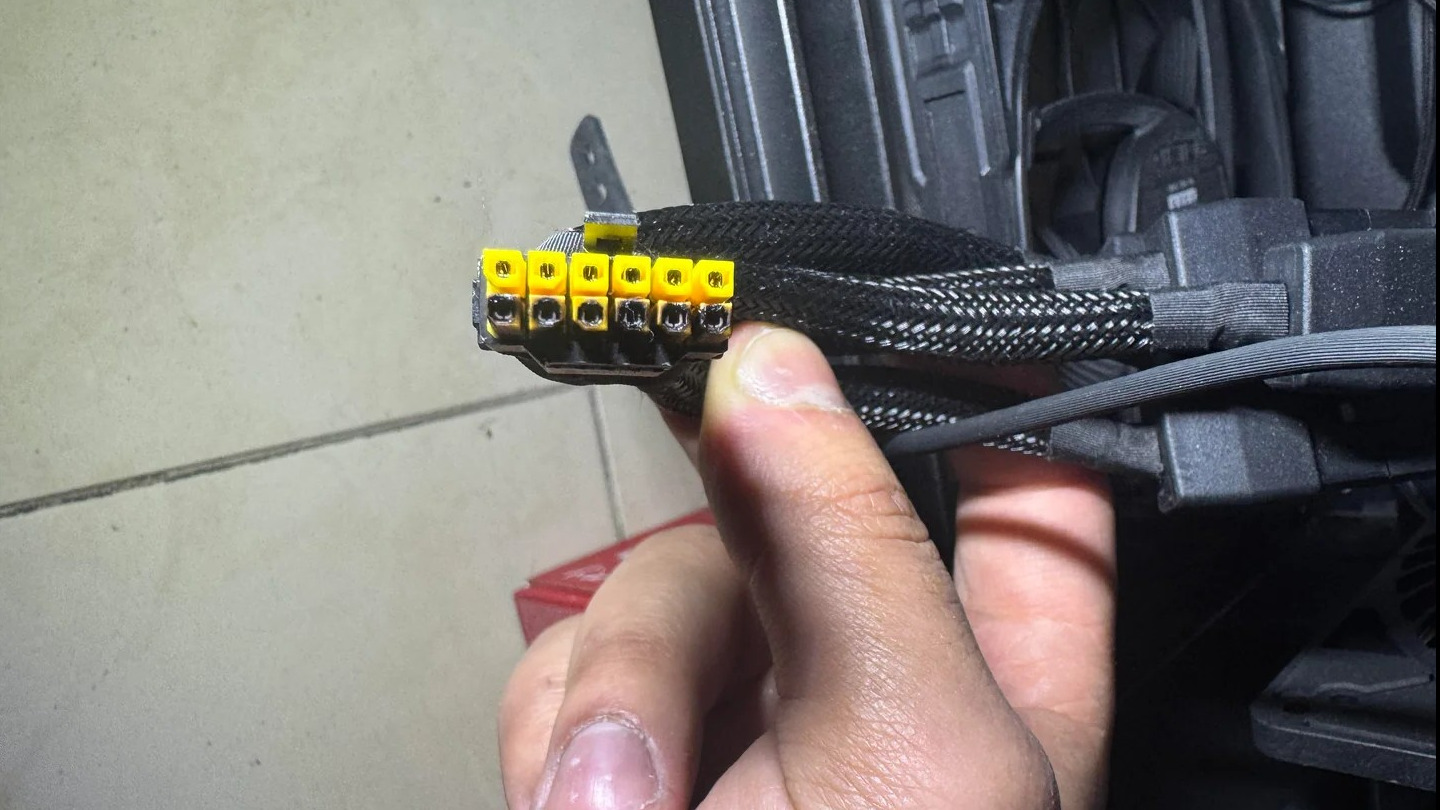
Another RTX 5090 has been reported with a melted 16-pin connector, adding to the already-long list of such incidents. Fortunately, the GPU-side connector remains intact, as verified by the Redditor. However, the yellow-tipped cable, which was ironically designed to aid users in seating the 12V-2x6 cable properly, was heavily charred, far more so than an overdone brisket.
Based on the details we gathered, the Redditor was sporting an MSI Gaming Trio RTX 5090 powered by the Corsair HX1500i (ATX 3.1 compliant), which has been in use for around two months. The GPU was powered through MSI's yellow-tipped 4x 8-pin to 16-pin adapter instead of the native 16-pin to 16-pin cable, mirroring another case we covered previously.
The user didn't explicitly confirm whether the cable was properly seated, which makes it hard to draw a firm conclusion. However, we should keep in mind that this connector features a yellow tip that stays visible until the cable is fully inserted. Similar to the previous case, the cable is visibly burnt along an entire row of 12V terminals. The damage is so prominent, I initially thought the black and yellow apperance was part of MSI's design.
rtx 5090 power connector melted from r/pcmasterrace
A quick look at the GPU-side connector shows no visible damage, and a replacement cable verified this. Most of these issues can be traced back to Nvidia's electrical design choices for the reference board designs of their RTX 40 and RTX 50 series GPUs. 12VHPWR implementations with high-end RTX 30 series models included three shunt resistors, allowing the GPU to read the six 12V pins as three individual inputs.
If the GPU detected that any of these pairs were missing, it could balance power distribution or shut itself off. This ability was removed with RTX 40 and RTX 50 series designs, with power from all six pins now consolidated across a single source.
Essentially, the GPU is unable to tell if, for instance, five of the total six pins are disconnected, preventing it from balancing power or shutting down. In the worst-case scenario, this can sink up to 500W (41.6A) of power through a single-pin, which is only rated for 9.5A at most.
A viable solution is to stick with cards that can provide per-pin current measurements, like Asus' Astral family. DIY experts have taken a different approach, however, crafting custom connectors with alarms and even built-in fuses.
Follow Tom's Hardware on Google News to get our up-to-date news, analysis, and reviews in your feeds. Make sure to click the Follow button.







